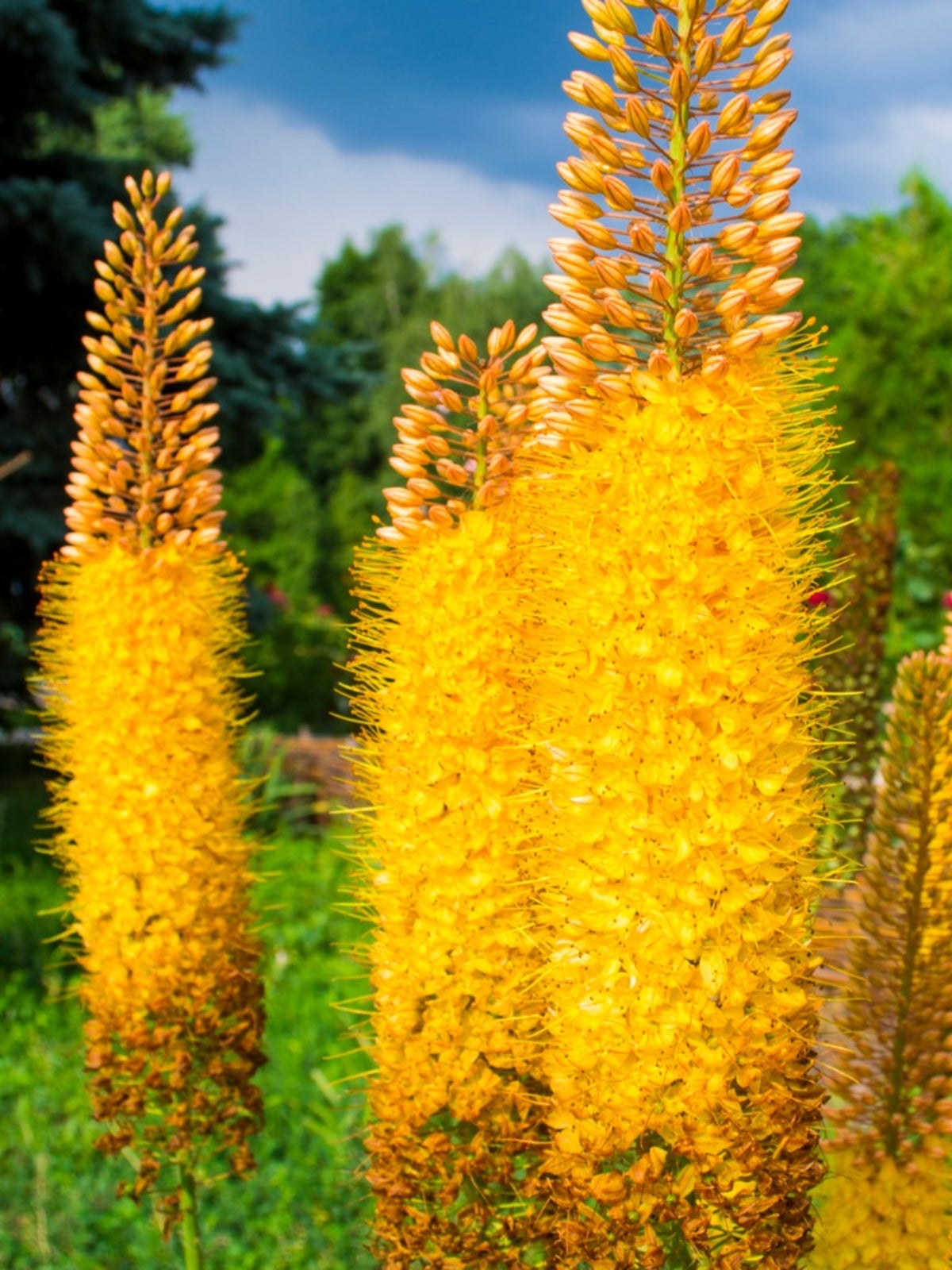Foxtail Lily Flower: How To Care For Foxtail Lilies


Foxtail lilies (Eremurus elwesii), also known as desert candles, make stunning attractions in the garden. Their tapered spikes of orange, yellow, pink, or white flowers can add interest to mixed beds and borders. Unlike other lilies, the foxtail lily plant has unusual tuberous roots rather than a single foxtail lily bulb. Below you will find more on how to plant foxtail lilies and foxtail lily care.
How to Plant Foxtail Lilies
When planting the foxtail lily bulb, choose a location in well-draining soil that has been enriched with compost or other organic matter. While adequate drainage is important with these plants, also keep in mind that they do not like overly dry situations either. Planting of foxtail lily flower usually takes place in autumn (around September). The tuberous roots, which are extremely brittle, should be planted about 4 inches (10 cm.) deep with at least 2 to 3 feet (61-91.5 cm.) of spacing between plants. For greater results, make the planting hole wide, leaving the bud or crown facing up. Keep the crown within a couple of inches (5 cm.) of the soil surface but cover the remaining tuberous roots well.
Foxtail Lily Care
Once established, foxtail lilies require little care with the exception of watering. In windy sites, the plants may need staking. Winter protection may also be needed, especially in cooler climates. Therefore, it's usually recommended that plants be heavily mulched with straw, leaves, grass clippings, or other suitable material each fall. This is also important following planting. These plants sometimes take a while to fully establish but once they do, they will produce attractive flowers and may even reseed themselves. Those grown from seed, however, take much longer to produce blooms. While they do not appreciate disturbance, the foxtail lily flower can be lifted and divided during the autumn planting season if overcrowding occurs.
Common Foxtail Lily Plant Problems
Foxtail lilies generally suffer little problems but as with any plant, it does occasionally happen. Slugs and snails may be a factor for young, newly planted foxtails. In addition, they may be prone to root rot if the soil is allowed to become too moist by poor watering practices or overcrowding. With this fungal disease, plant leaves will often turn brown prior to blooming. Keeping plants dry and providing adequate air circulation can help alleviate problems. The use of copper fungicides can also aid with prevention.
Sign up for the Gardening Know How newsletter today and receive a free copy of our e-book "How to Grow Delicious Tomatoes".

Nikki Tilley has been gardening for nearly three decades. The former Senior Editor and Archivist of Gardening Know How, Nikki has also authored six gardening books.